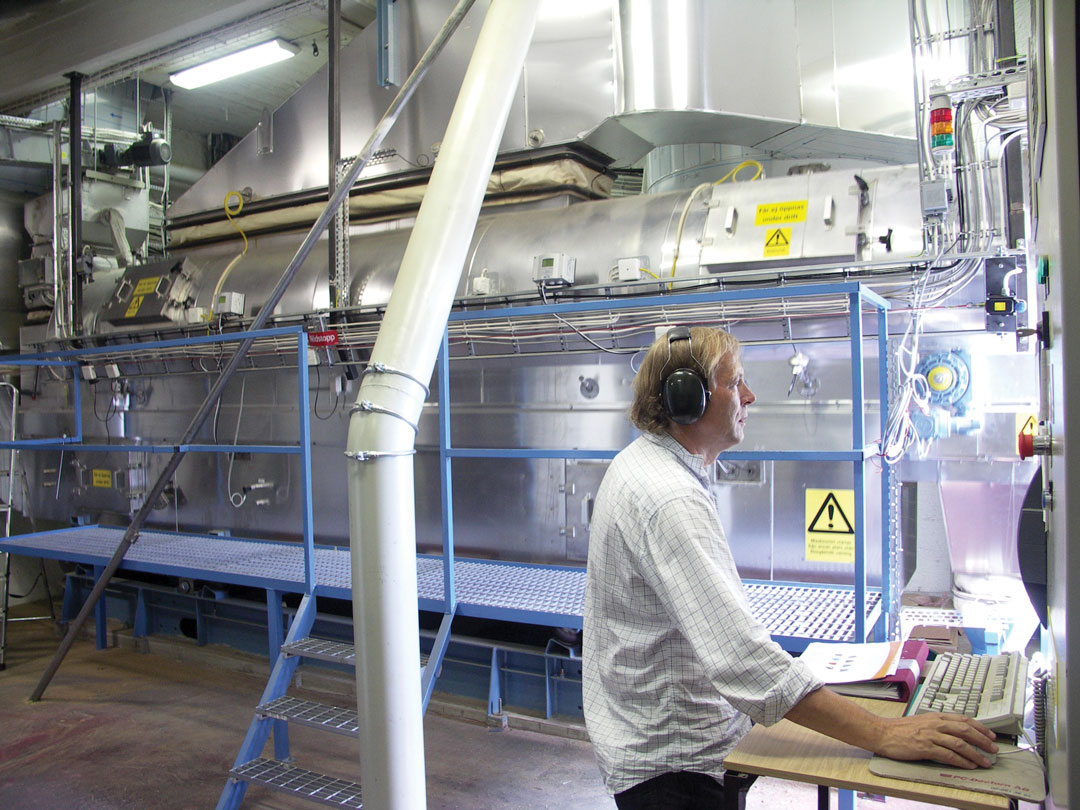HUNTING CEREAL KILLERS
LACOMBE’S RESEARCH TEAM BATTLES VICIOUS LEAF DISEASES
BY GEOFF GEDDES
Barley farmers face many obstacles in the course of a growing season, but one threat is ever present: leaf disease.
Kelly Turkington, PhD, and his colleagues at the Lacombe Research Centre, know this all too well. The centre is one of 19 national agricultural research centres operated by Agriculture and Agri-Food Canada.
As a research scientist specializing in plant pathology, Turkington has seen leaf diseases ravage healthy crops.
“Leaf diseases are complex,” he said. “They attack at different times and in different ways, so we take a multi-faceted approach to them.”
Unfortunately for the scientists, the problems of leaf disease have only worsened over time.
“We’ve seen a dramatic shift over the last 25 years to a rotation based on canola-cereal-canola. It’s a bad rotation from a disease standpoint because it’s not long enough to allow for decomposition of pathogen-infested crop residues.”
Turkington said that two years is needed between host crops.
“You must allow time for the residue to dissipate. At one year, there’s sufficient residue left in the field to cause disease.”
BREEDING SUCCESS
“One line of defence involves co-operative breeding programs,” said Turkington, referencing Alberta Agriculture and Rural Development in Lacombe, the University of Saskatchewan and Agriculture and Agri-Food Canada in Brandon, MB.
“We collaborate on the development of breeding lines and varieties that are resistant to disease.”
Farmers will appreciate that the added input costs involved with this approach are minimal.
“You’re just shifting to a variety with resistance to disease,” Turkington said. “It’s an easy technology and you don’t have to worry about whether to spray.
TIMING IS EVERYTHING
In addition to broader disease strategies, Turkington’s team is investigating fungicide timing (flag leaf stage versus flowering) and interactions with seed treatments.
“It’s about timing,” said the researcher. “Recently completed experiments assessed the impact of fungicide timing on leaf disease management in malting barley.”
There is interest in applying fungicide at an early crop growth stage when herbicides are applied.
“Farmers may assume that they’ve dealt with the leaf disease problem when they haven’t. Based on our findings around how fungicides work and move in the plant, and the key plant tissues that contribute to grain filling in cereals, early application is of little benefit. It’s best to delay fungicide application to actively protect the upper canopy of the leaf tissue, which is important for grain filling and yield.”
As for seed treatments, they’ve been around for years, but there’s always room for improvement.
“We’re looking at whether seed treatments, apart from protecting the plant when it’s emerging, can also protect into the two-, three- or four-leaf stage,” said Noryne Rauhala, Turkington’s lead research technician. “Can the treatments hold leaf disease in check, especially if disease pressure is high when they’re young?”
STRATEGIES THAT MAKE CENTS
“Yield loss from leaf disease ranges from 15 to 40 per cent,” said Turkington, “so if you’re not mitigating your risk with rotation, resistant varieties or fungicide, it becomes costly.”
At the same time, he said that since resistant varieties have minimal disease risk, you may waste $7 to $15 dollars per acre on fungicide and derive no benefit.
For optimal results, he said his team balances lab and field work.
“Our disease resistance work is done primarily in disease nurseries, but we also collaborate across the Prairie region on integrated disease management trials.”
Those trials reach from Beaverlodge to Lethbridge in Alberta and east through Saskatchewan (Scott, Indian Head and Melfort), Manitoba (Brandon) and all the way to Charlottetown on Prince Edward Island.
There are a host of variables that the barley farmer can’t control, from weather to economics to changing consumer demands. But leaf disease is one area where—armed with the right tools and strategies—the producer stands a fighting chance.






Comments